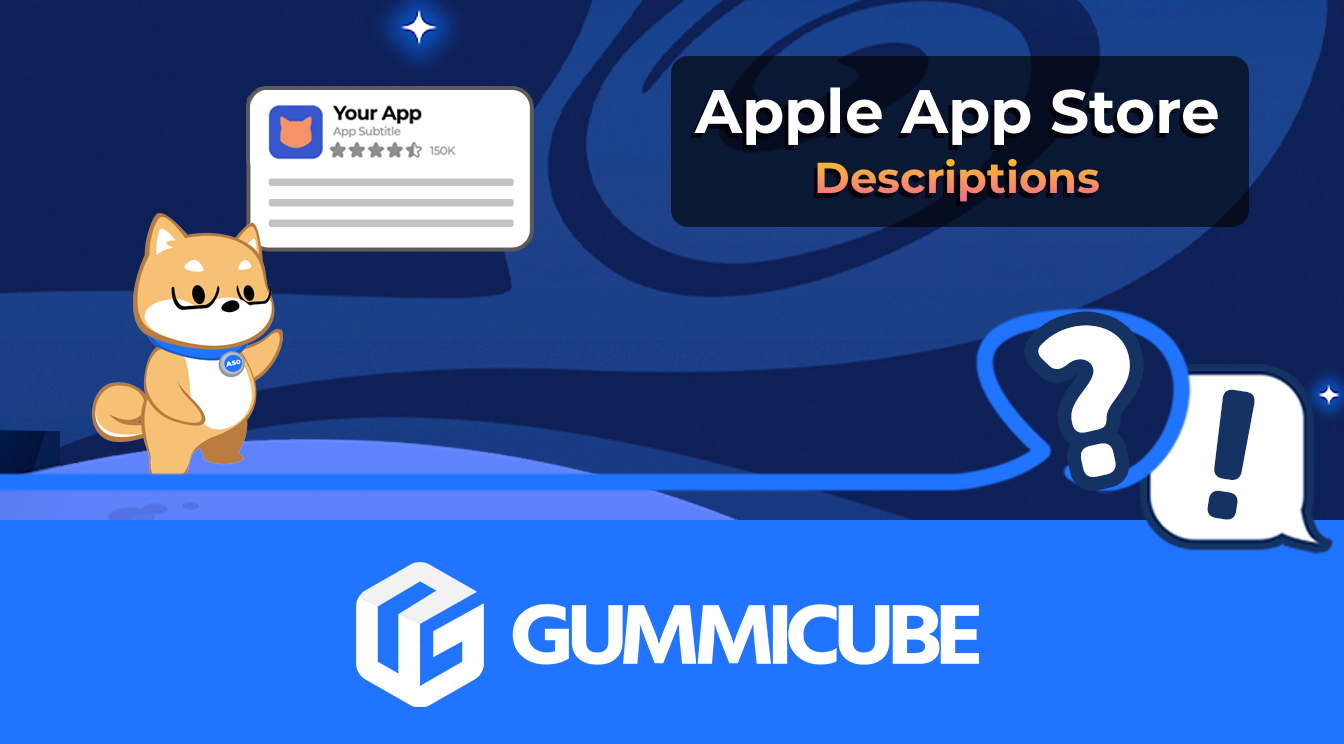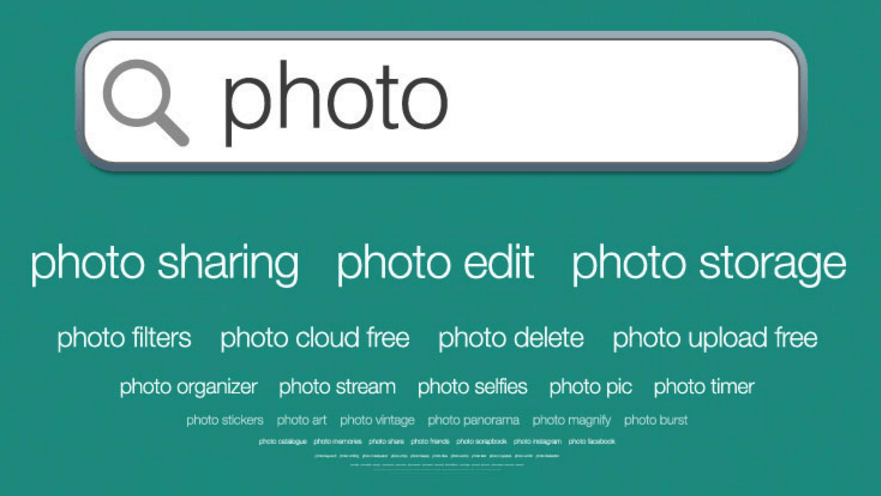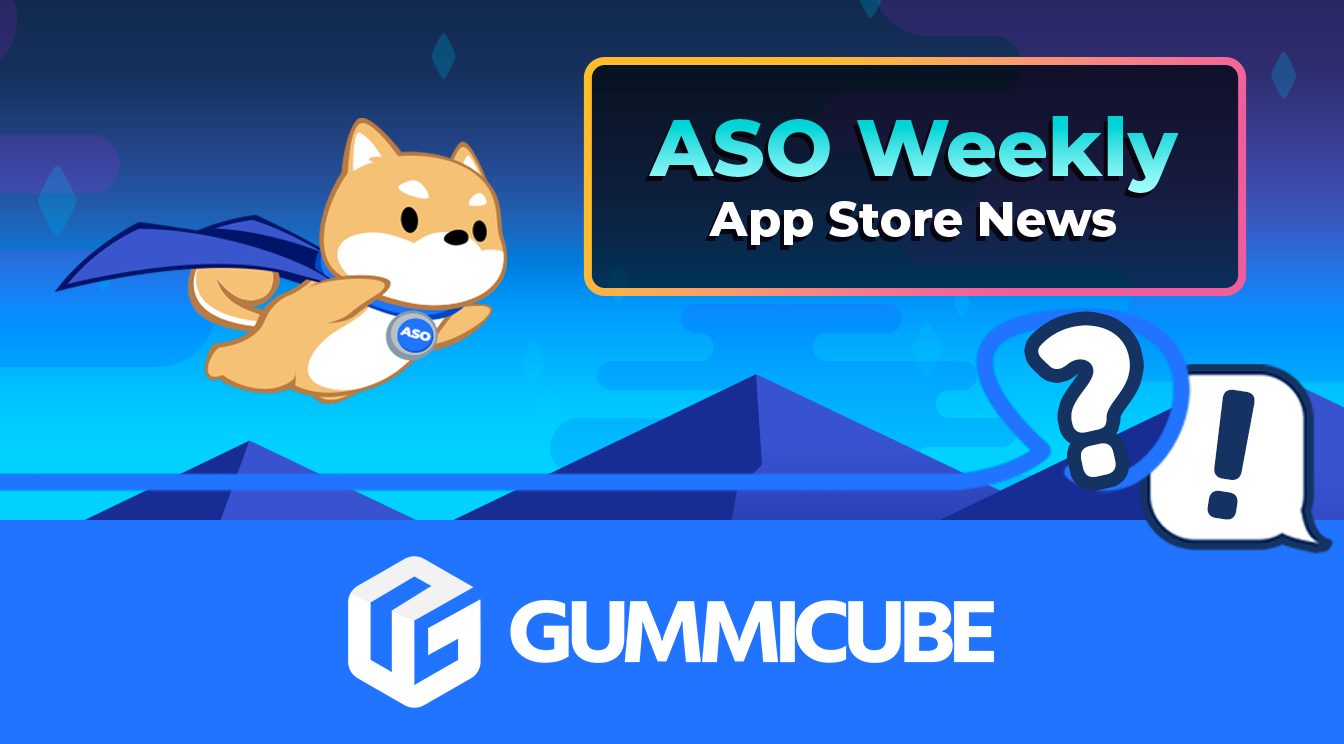
How to Write an Apple App Store Description
Posted on July 17th, 2024
Learn how to approach App Store descriptions the right way so you can effectively engage and convert users.

Acquiring users for your mobile app organically starts with being ranked in the app stores for relevant search terms. Rankings are established by the app store listing, as well as by several app performance metrics. For example, an app listing that is optimized for travel deals might have great search term coverage, but the icon and screenshots are bad or confusing leading to low conversions. Of these low conversions, users don’t rate or review the app, or open it once and forget about it or delete it. Not good for rankings. Organic users are acquired in the app stores by addressing the following:
Let’s take a look at 8 ASO tools that help us address each of these areas.
All of the elements for ranking in the app stores and acquiring users work together, but app store visibly starts with app listing metadata and the words and phrases that are targeted. Relevance is better than a “wide net”, modifiers can be helpful (free, new) but the key is tapping into and understanding how your target market is searching the app store for your app. The two main tools for understanding how your target market searches for your app or similar apps are app store intelligence software like Datacube from Gummicube and focus groups.
is the software we use to collect and analyze proprietary app store data, and build app store optimization plans for our clients.  The main thing to look for when evaluating app store intelligence software or services is where the data comes from.
Many tools use Google's web search API as a proxy for app store search.
The way people search the web is very different than how they search the app stores - so use a tool that is built on actual app store data like Datacube from Gummicube.
The main thing to look for when evaluating app store intelligence software or services is where the data comes from.
Many tools use Google's web search API as a proxy for app store search.
The way people search the web is very different than how they search the app stores - so use a tool that is built on actual app store data like Datacube from Gummicube.
are a tool that provides very specific feedback from a defined, target audience as to how they would search for an app given a set of features or benefits. Using a focus group at the start of an optimization campaign to uncover terms and phrases used by your target audience can pay dividends in relevant search term coverage that your competitors are missing.
Your app has good, relevant search coverage but if it doesn’t convert at a rate expected for its ranking - your app's ranking for that specific term will drop. Alternatively, if your app converts better than expected given the ranking - it signals to the app stores that searchers find your app as a relevant and attractive result for that term- lifting your app up the results list Design elements make up most of an app listing in search results. The icon and screenshots and even order of the screenshots have shown to have a huge impact on conversion rates.  For that reason, the tools we recommend for maximizing app conversion rates are focused on getting qualitative and quantitative feedback on the app listing's graphics.
For that reason, the tools we recommend for maximizing app conversion rates are focused on getting qualitative and quantitative feedback on the app listing's graphics.
or multivariate testing of icons and screenshots is only supported in Google Play
provide data that no amount of multivariate (or A/B testing) can - and that's qualitative feedback. Test a wide range of icon and screenshot ideas with a focus group and you will learn not only which icons or screenshots converted best, resonated best or were prefered, but also why. When first marketing an app, and before publishing in the app stores, learning from your target audience what they think about a design or their impressions beyond just the data provides insights and a direction that can then be tested on live app store traffic.
There are several ways to measure engagement and retention. Number of sessions, session length, do users keep the app installed etc.. The primary focus of optimizing engagement and retention should be on maximizing lifetime value (LTV) however you decide to measure that. An increase in any of the above metrics will likely help your app store ranking. Two of the best tools outside of app design, gamification and other elements of the app itself are notifications and deep linking or app indexing.
are sometimes referred to as push or local, depending on where the notification is triggered - but the impact is largely the same. Apps like Farmville and Candy Crush set the standard with notifications triggered by the end of a loop (the carrots are ready to be picked) or when you had "earned" new lives to continue playing. Opened at a rate more than twice that of emails, notifications are a great tool for reminding users to come back to your app, in a short format they can immediately take action on or ignore.
and deep linking are closely related but the most relevant for this post is the indexing on in-app content for web search, Google Now and Apple Spotlight search. App indexing allows app publishers to both tag web content that also is available in their mobile app, and add metadata to in-app content for visibility in Google Now and Spotlight. A simple example is your recipe app has been installed, a user then uses Spotlight/Google Now/ Safari/Google for a taco recipe, your taco recipe is at the top of the list with a "link" directly to the content within your app.
The process for acquiring ratings and users from users is not great. App publishers cannot incentivize reviews in any way, and any request for a review means taking a user away from your app into the app store. A report from Soomla showed across apps they tracked, the review rate for apps was consistent across geos - and it was consistently terrible - with roughly .5% of users globally taking the time to rate or review an app. A general rule of thumb has traditionally been 1 in 1000 - so I guess things are looking up? Hopefully Apple and Google will continue to put a greater emphasis on the actions users take (engagement and retention above) with apps vs some very small percent who take the time to submit a review. That said, there are a few tools to help app publishers minimize bad reviews and prompt users to take the time to rate and review.
is a complete in-app feedback system, with a primary feature being user rating and review prompts. One of the best ways to acquire user ratings is 1) to ask for them 2) at the right time 3) and funnel customer service issues away from the app store review system and to your service team.

Crashlytics is a crash and bug reporting tool acquired by Twitter and integrated into their Fabric app development suite. The best way to avoid bad reviews is to have app that doesn't crash!
There you have it, 8 tools to help with your app store optimization and mobile app promotion. The on-going use of these tools to impact visibility, conversion, retention and ratings will have a positive impact on rankings and ultimately on installs and organically acquired users.

Learn how to approach App Store descriptions the right way so you can effectively engage and convert users.

Learn how to grab your audience's attention through effective and engaging app store preview videos.

Welcome to this week’s ASO Weekly - The App Store halts gambling ads amidst outcry and the Apple takes a bite out of NFT app sales.